The best anti-vomit bowls for cats to reduce discomfort and mess
Looking for the best anti-vomit bowls for cats? We've selected our top picks and asked the experts for advice.
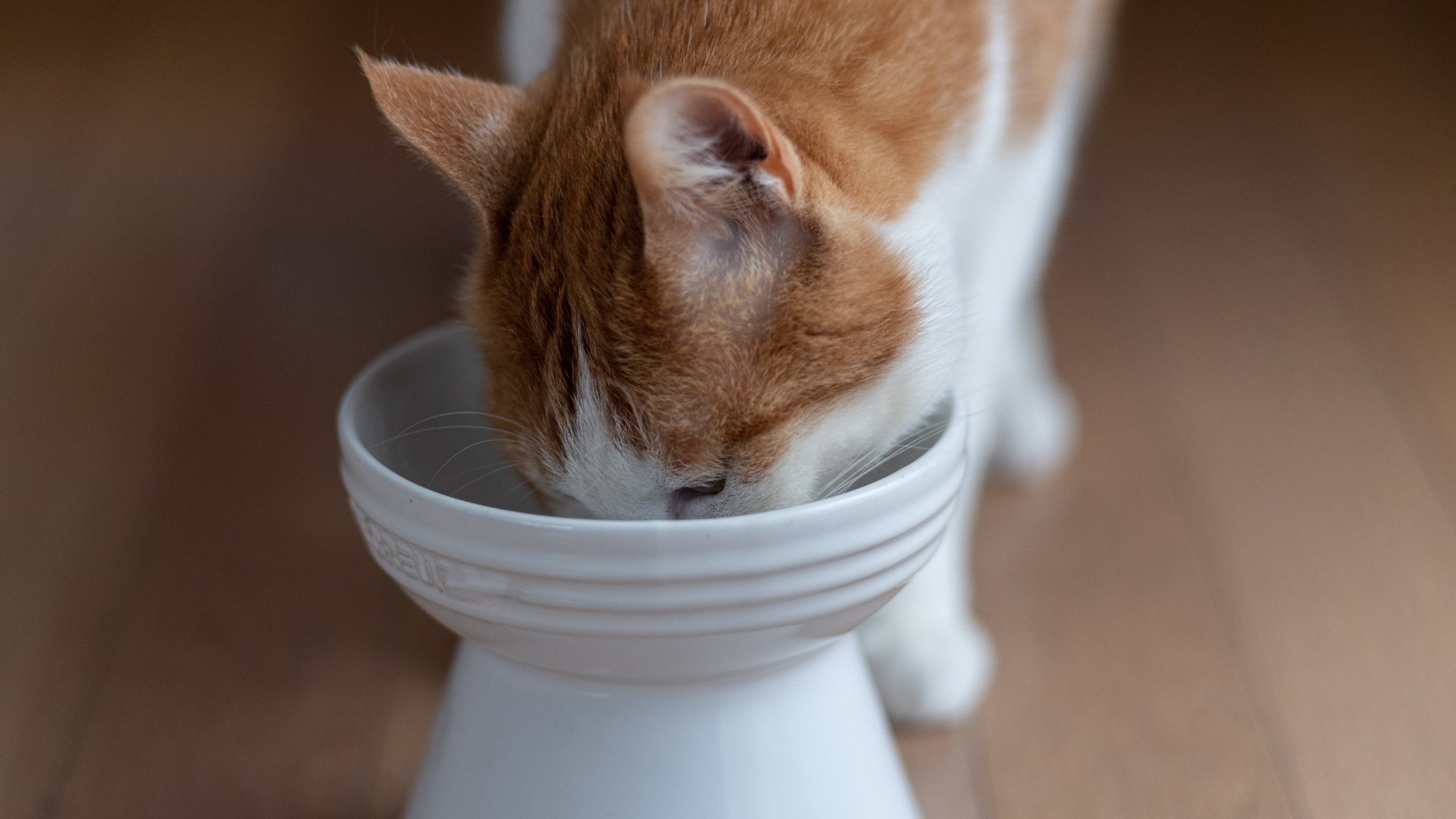
If your feline throws up after their meals, you should try one of the best anti-vomit bowls for cats. There are lots of reasons why they might be vomiting, but if they're showing no other signs of illness, it could be a case of them eating too fast.
Just like the best cat puzzle feeders, anti-vomit bowls are designed to help with digestion. You'll find that most of them are elevated and tilted which reduces neck strain, allows your cat to get deeper inside, and promotes healthy digestion. Some bowls might even have ridges to help slow down their eating.
Whilst there isn't much evidence around whether they prevent vomiting, lots of pet parents have had positive experiences and found that they have helped.
Expert vet Michael Thompson says: “In the wild, cats typically consume smaller portions throughout the day. So when it comes to slow feeder bowls, particularly those designed to prevent vomiting, the key is to get closer to these natural feeding patterns that prevent binge eating and promote digestion.”
Below, we've rounded up the best anti-vomit bowls for cats and put them to the test:
The best anti-vomit bowls for cats 2025
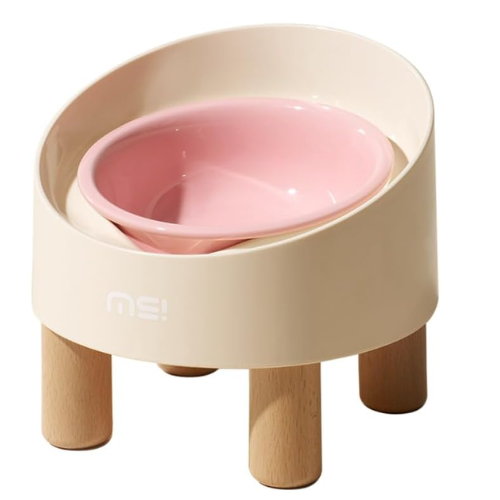
The best anti-vomit bowl for cats overall
This bowl has an elevated design and 8° tilt, making it a lot easier for my cats to eat from compared to their old ones.The pastel pink looks gorgeous in my kitchen, but it also comes in green if that’s more your style.
When you want to clean it, you can remove the bowl from the base and pop it in the dishwasher. The stand can be wiped clean and catches any spills that your fur friend makes (this has been a lifesaver since my cats are the messiest eaters!). If you want to put it on the floor, you can remove the legs too.
It might be a little more expensive than your average bowl, but I think it’s worth the money, thanks to the high-quality and unique design.
Reasons to buy: Cute design, titled, elevated, controls mess, removable legs, dishwasher-safe, BPA-free.
Reasons to avoid: A little more expensive.
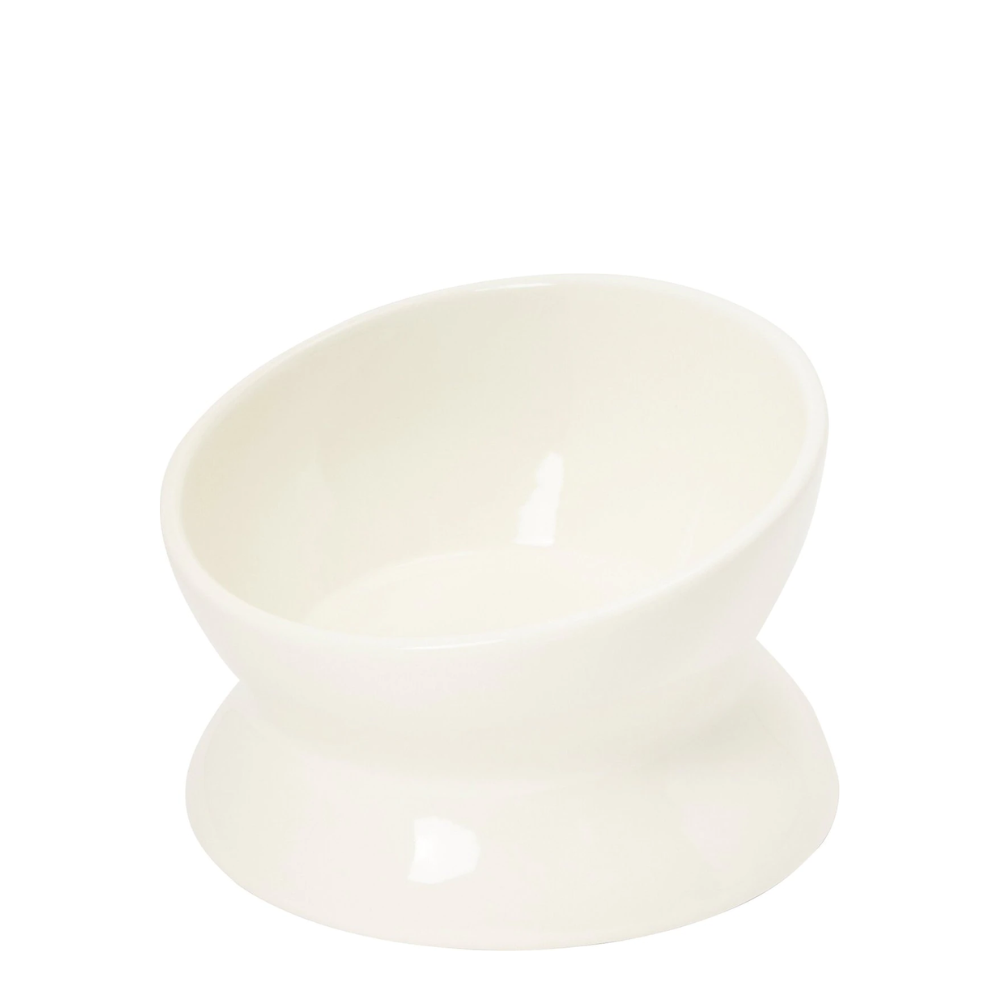
The best ceramic anti-vomit bowl for cats
Thanks to the elevated and tilted design, this bowl will support your cat's neck when they're eating. It's double-sided, which means you can flip it over and have two bowls in one. Each side has a different shape and angle, making it customizable to your cat's size.
The bowl is made from BPA-free and lead-free ceramic. It's dishwasher safe and can hold up to 8oz of wet or dry food.
Our tester Diana says: "The bowl is super heavy, and feels a lot more expensive than it is. It will take a bit of effort to break which is good. Because it's ceramic, it felt like it was capable of keeping the water cooler for longer (great for summer)."
Reason to buy: Affordable, double-sided, tilted, elevated.
Reason to avoid: Not the best option for small cats.
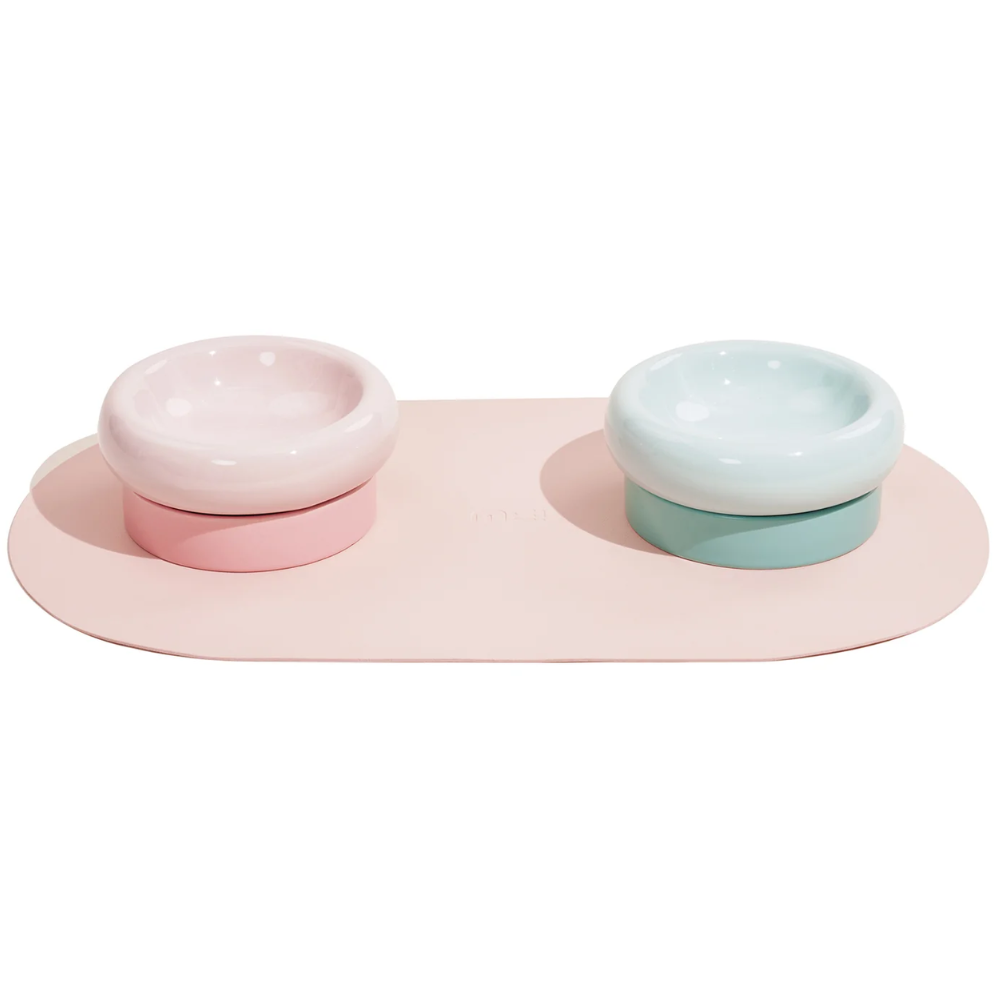
The best anti-vomit bowl for whisker fatigue
This cat bowl is shallow and wide, which might help to prevent whisker fatigue. You'll get two bowls for the price of one, and you can stack them on top of each other to elevate the height.
They're made from 5A food-grade ceramic, meaning the materials are safe for your fur friend to eat from. It's anti-tipping, easy to clean, and holds up to 4oz and 2.7oz of food. Plus, the design is super cute and comes in two pastel shades of blue or pink.
I love how this bowl looks in my kitchen; the pastel pink shade is super-cute and the two-in-one design has been really handy. As well as earning points for style, most importantly, it’s been easy for my cats to eat from and is the perfect height for my smaller cat, Nala.
Reason to buy: Wide, shallow, 2-in-1 design, elevated.
Reason to avoid: Not tilted.
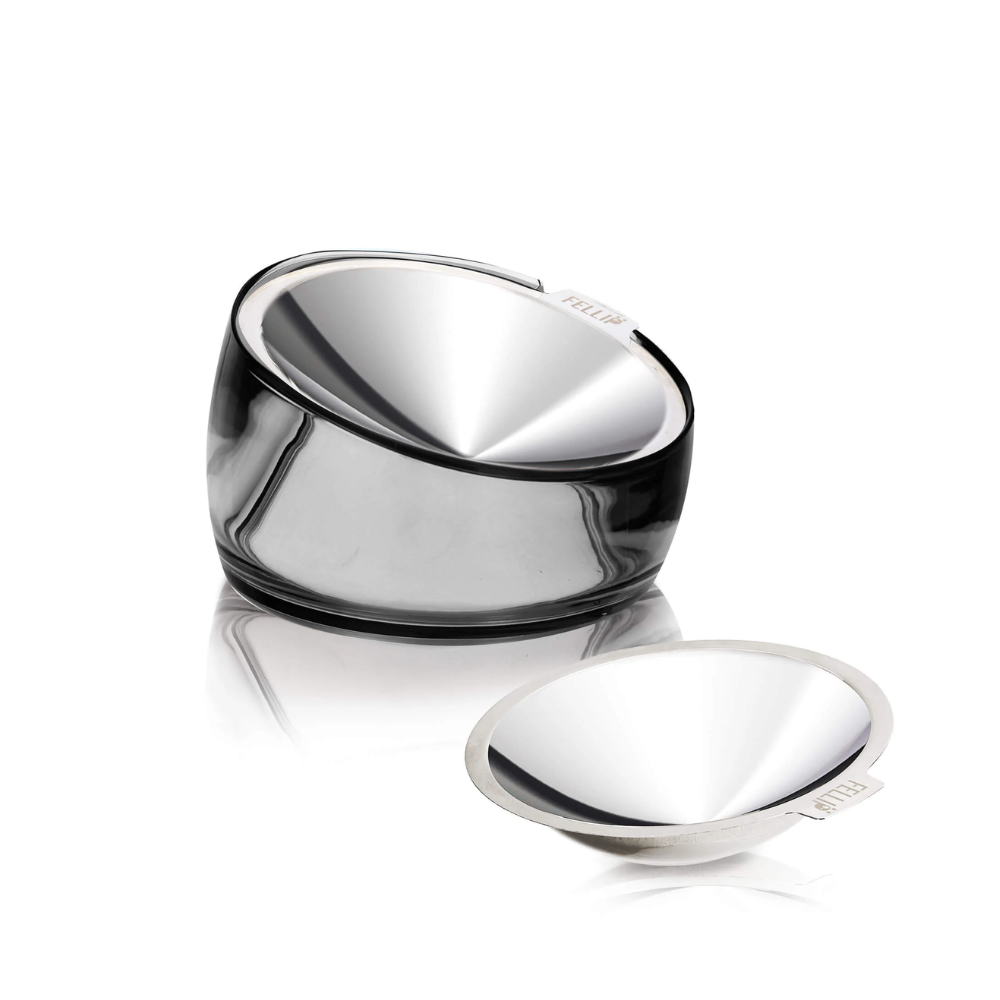
The best stainless steel anti-vomit bowl for cats
Featuring a 15° tilt and an elevated height, this bowl will make it easier for your cat to eat. It's made from 304 stainless steel which is non-toxic and can be easily cleaned in the dishwasher.
You can also remove the top dish and use the plastic stand for water, making it two-in-one product to save you money. The stylish design is available in grey, sapphire, gold and blue.
This product is currently in testing, we'll be adding our review soon.
Reason to buy: Shallow, elevated, tilted, two bowls in one.
Reason to avoid: Slightly more expensive.
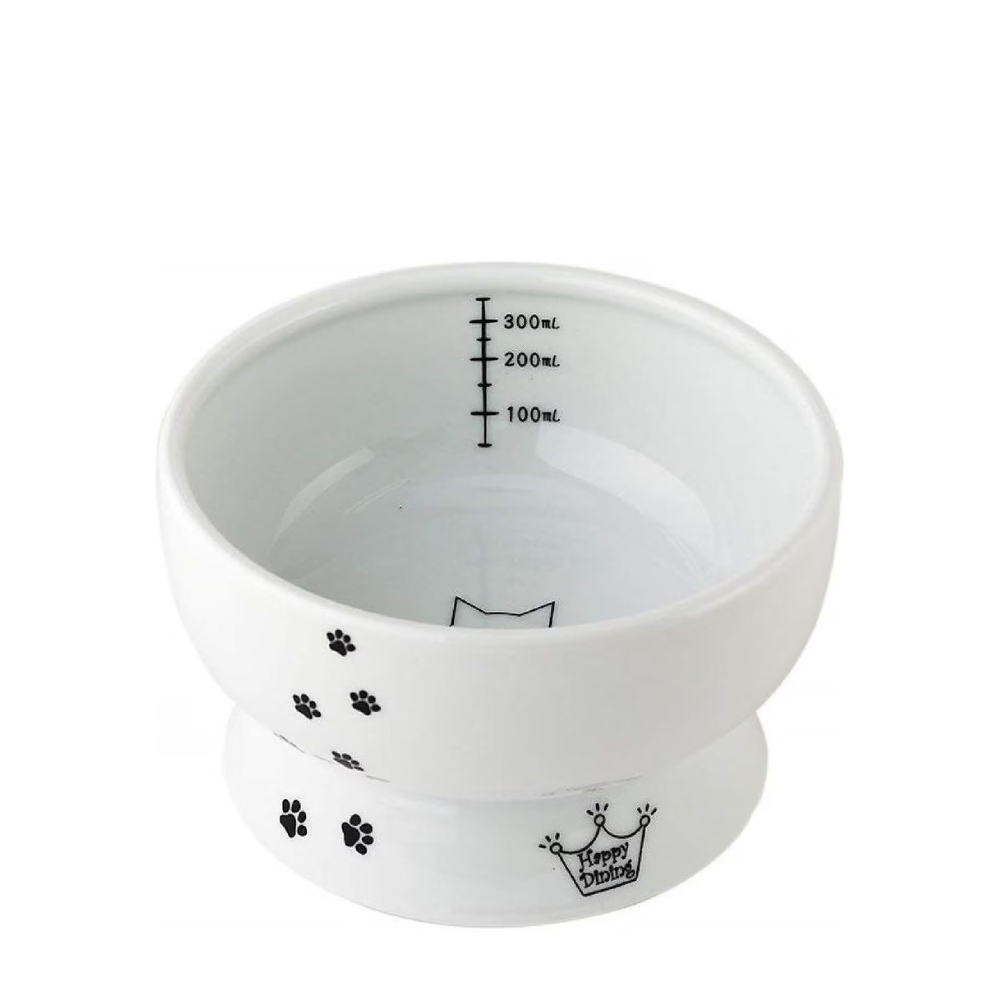
The best anti-vomit bowl for water
This elevated water bowl will help to prevent neck strain and make it more comfortable for your cat to drink. It also features measuring lines so you can monitor how much your fur friend is drinking. It's available in two different heights, so you'll be sure to find the perfect fit.
The bowl is made from FDA-approved porcelain which is non-absorbent, dishwasher-safe, and easy to clean. It also has a lip at the top to prevent any unwanted spills.
This product is currently in testing, we'll be adding our review soon.
Reason to buy: Elevated, measuring lines, non-spill.
Reason to avoid: Not tilted.
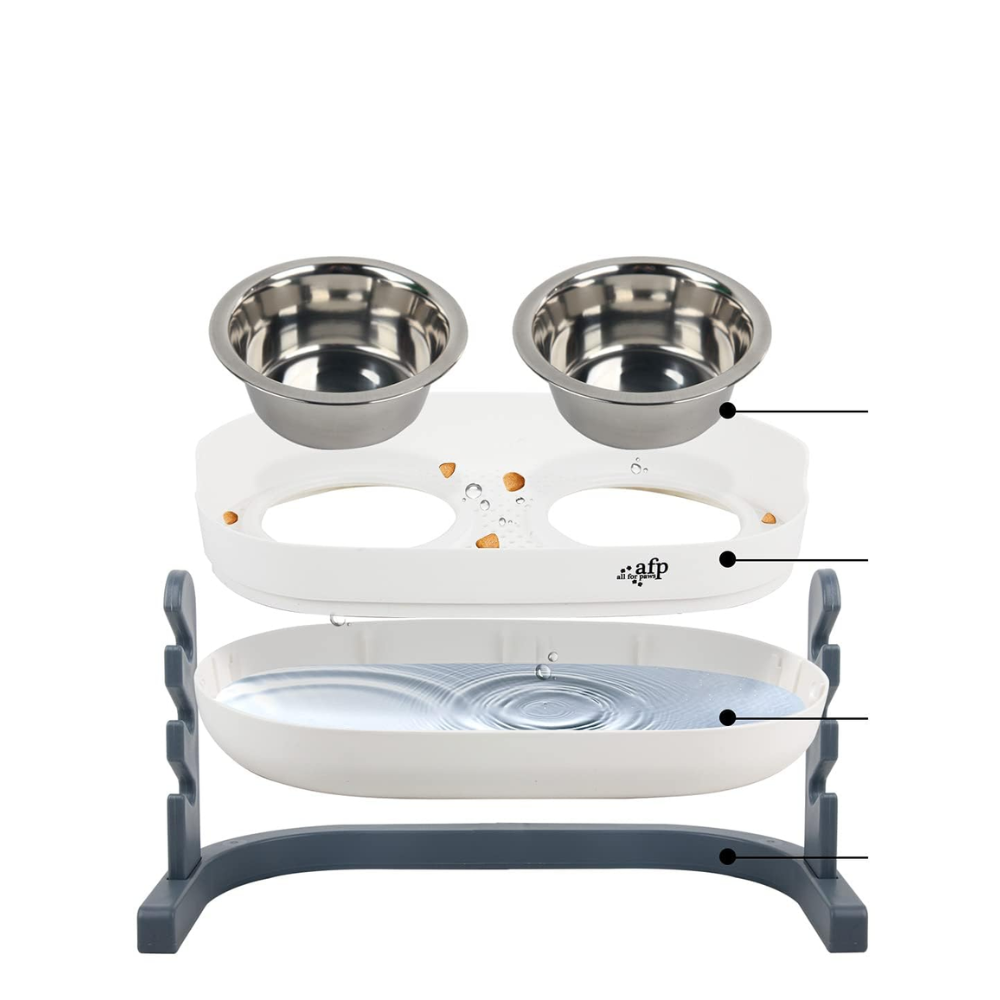
The best adjustable anti-vomit bowl for cats
This bowl is suitable for cats of all sizes, thanks to the adjustable height and angle. This helps to support your feline's neck and posture, and provides a comfortable eating position - no matter how big or small they are.
It also features a reservoir which catches spilled water and food, making it easier for you to clean up their mess. The bowl is made from stainless steel and is available in black, white or silver.
This product is currently in testing, we'll be adding our review soon.
Reason to buy: Adjustable height, mess-free, elevated, tilted.
Reason to avoid: Hand-wash only.
Photos from testing
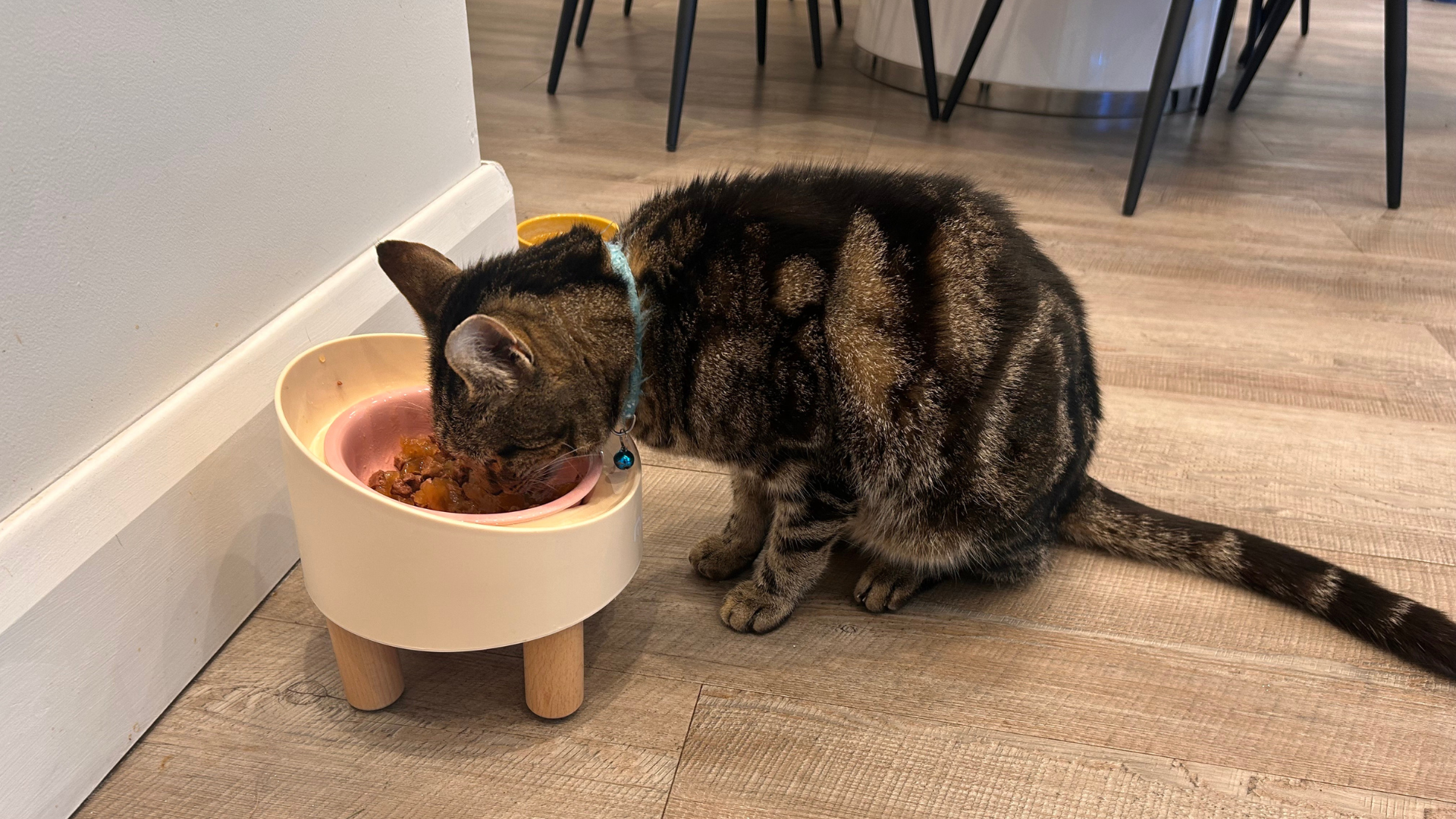

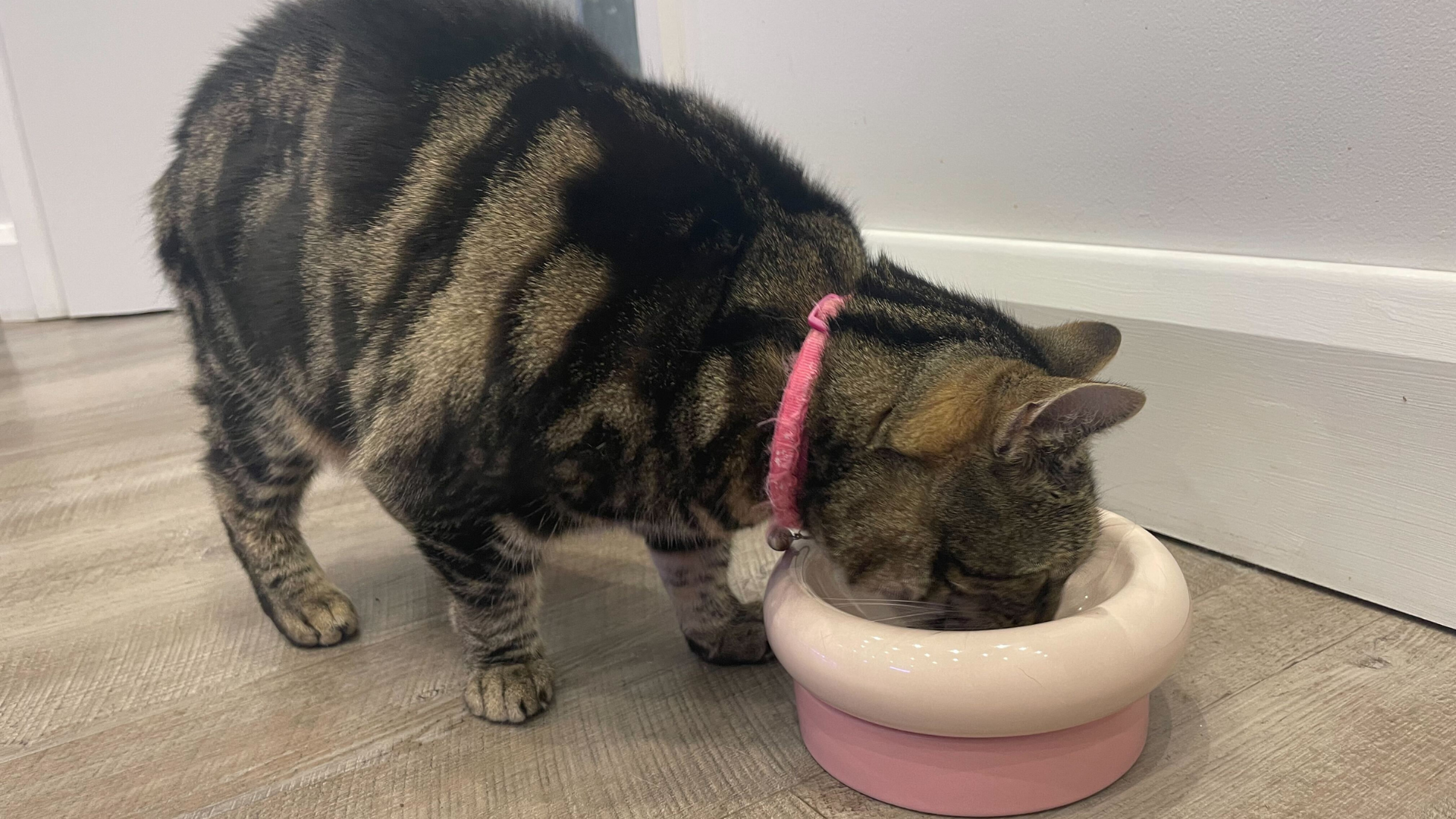
How we tested the best anti-vomit bowls for cats
To find you the best anti-vomit bowls for cats, we spent hours researching and consulted our trusty team of expert vets. After we selected our top six picks, we put them to the test and looked out for:
1. Materials: From stainless steel to porcelain, we included a range of materials to suit you and your cat's preferences.
2. Fit for purpose: As recommended by our expert vets, we included designs that are raised and tilted to ensure they really are 'anti-vomit'. We only feature products that our cats actually want to use, too.
3. Budget: Not everyone wants to drop $30 on a cat bowl - and we get it! That's why we featured bowls with various price points, starting at under $10.
4. Design: Whether you love pastels or prefer a sleeker look, we included a range of designs to suit your style and home.

How to choose the best anti-vomit bowls for cats
The best anti-vomit bowl for your cat will depend on several factors, here's a few things to consider...
Elevation
Although there is a lack of scientific evidence behind the effectiveness of anti-vomit food bowls for cats, many pet owners have had positive experiences with this particular design of food bowl.
If you’ve scrolled through the reviews section of any anti-vomit food bowl products online, you will have noticed many small dog owners, especially bulldog owners, purchase this type of feeder for their canines. This is because they are prone to unfortunate digestion problems such as GDV in dogs (gastric dilatation volvulus) or bloat in dogs. Cats experience digestion issues of their own, hence why anti-vomit bowls are a no-brainer for many feline parents.
Standard cat food bowls sit flat on a surface whereas an anti-vomit food bowl sits elevated off the floor. Cats often look more comfortable when eating from an elevated bowl than if they have to strain their neck into a bowl to retrieve their meals and this elevated position can help aid digestion.
Tilt
Once you find a food bowl for your cat that’s elevated off the floor, you should look for a design that also features a tilt. The two features combined allow your cat to strut right up to their feeder and chomp down their meals with ease. If you happen to notice your cat frequently leaves food behind in their bowl, this could be because they struggle to reach deeper inside - a tilted bowl can prevent this. This will only work if the level of elevation is compatible with the size of your cat so it is neither too high nor too low for ease of eating.

Whisker-friendly
The construction behind most of the best anti-vomit bowls for cats is that they are shallow and wide for easy access. Why? First of all, like we said above it’s a more comfortable way for cats to access their food, helping to avoid neck strain. Secondly, it can help prevent something known as whisker fatigue in cats.
Whisker fatigue may occur when your cat feels like they’ve been overstimulated from touching certain surfaces. If they’re repeatedly having to plant their face in a food bowl to retrieve their food and this bowl is narrow and deep, their whiskers will hit off the side of the bowl and cause discomfort.
This is where elevated and tilted bowls come in handy. Whether or not whisker fatigue is a real issue for your moggy, an anti-vomit food bowl is a great way to increase your cat’s comfort while they eat.
Hygienic
This last feature is something we humans like: cleanliness. We like to know things like how our food is prepped and how clean the plates and surfaces they are served on are. Your cat deserves a clean eating environment as well.
The bowl you opt for will be the one your cat eats out of every day so take time looking for one that won’t gather old bits of food or bacteria in any parts of the design. Also, consider what will be most convenient for you to clean. Is it dishwasher safe? What material is it made from? The plastic anti-vomit cat food bowls are superbly priced and often are fairly simple to wipe clean but ones made from nonporous materials like ceramic or stainless steel tend to be more hygienic overall.
Vet Dr. Joanna Woodnutt says: "Since the causes of vomiting after eating aren’t completely understood, the types of anti-vomit cat bowl that might work for your cat may vary. There’s no scientific evidence that any cat food bowls can prevent vomiting, but there are a few things that might work for your cat."
She explains that bowls that are designed to slow your cat’s eating down may help reduce ‘scarf and barf’ in cats – when a cat vomits after eating too quickly. These bowls might have ridges that make it harder to get large mouthfuls of food or may take the form of a puzzle feeder.
What are the benefits of using an anti vomit cat bowl?
Using an anti-vomit cat bowl will reduce the risk of stomach inflammation (gastritis) or esophagus (esophagitis), prevent tooth erosion due to acidic vomit, and promote a more stable appetite and weight. So, while not every cat needs an anti-vomit cat bowl, many cats will benefit, even if you hadn’t previously noticed a significant problem.
Do all cats need an anti-vomit cat bowl?
Anti-vomit cat bowls encourage slower eating and promote better digestion, reducing gastrointestinal upset signs and often improving gut health. Therefore, while not every cat needs an anti-vomit cat bowl, many cats will benefit, even if they don’t vomit regularly.

Do anti-vomiting cat bowls work?
Do anti-vomit cat bowls work? Vet Dr. Catherine Barnette notes that cat owners have seen positive results when feeding their pets from an anti-vomit bowl, suggesting that anti-vomit bowls do work in some cases. However, she highlights that frequent vomiting could indicate an underlying medical issue and that it’s best to consult your vet if your cat is vomiting regularly after meals.

Megan is a lifelong animal lover and joined the PetsRadar family last year as Staff Writer. She's a cat mom of two and is committed to finding the best anti-vomit bowls on the market to help you make an informed decision. Megan graduated from the University of Westminster with a degree in Journalism.

Dr. Joanna Woodnutt qualified as a vet from the University of Nottingham where she then went on to practice companion animal medicine in the Midlands. She really took to the consulting side of things and helping clients with medical problems such as dermatology, behavior and nutrition - anything that involved helping clients understand their pets better.

Dr. Barnette is a graduate of the University of Florida, where she received both her B.S. in Zoology and her Doctor of Veterinary Medicine (DVM). She has 15 years of clinical experience as a small animal vet, treating dogs, cats, and occasional exotic patients. She now works as a freelance veterinary writer, creating educational content for vets, vet team members, and dedicated pet owners. Dr. Barnette lives in southwest Florida with her husband and daughter (plus two cats, a dog, and a rescued dove!) and enjoys kayaking, biking, and hiking.
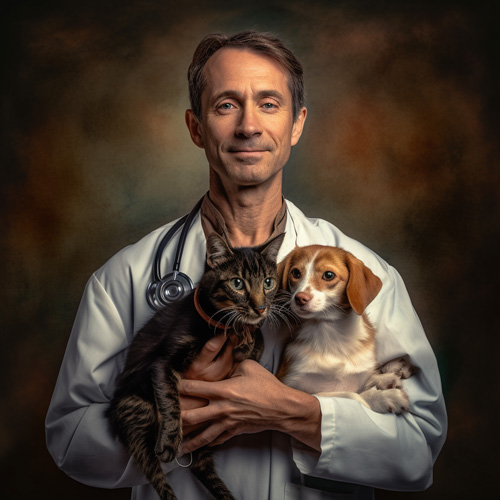
Dr. Michael Thompson is a vet from Austin, TX. He is the founder and leading veterinary advisor of Pets Food Safety, an organization that provides free, research-backed food safety information for cats, dogs, and other small pets. Michael enjoys sharing his passion, knowledge, and experience in animal nutrition and welfare with pet owners everywhere.
Get the best advice, tips and top tech for your beloved Pets

Megan is a Staff Writer at PetsRadar, covering features, reviews, deals, and buying guides. She has a wealth of experience caring for animals, having grown up with dogs, cats, horses, guinea pigs, and more throughout her life. She studied BA Journalism at the University of Westminster, where she specialized in lifestyle journalism and was editor of Smoke Radio’s lifestyle website. Megan works alongside qualified vets and accredited trainers to ensure you get the best advice possible. She is passionate about finding accurate and helpful answers to your pet-related questions.
